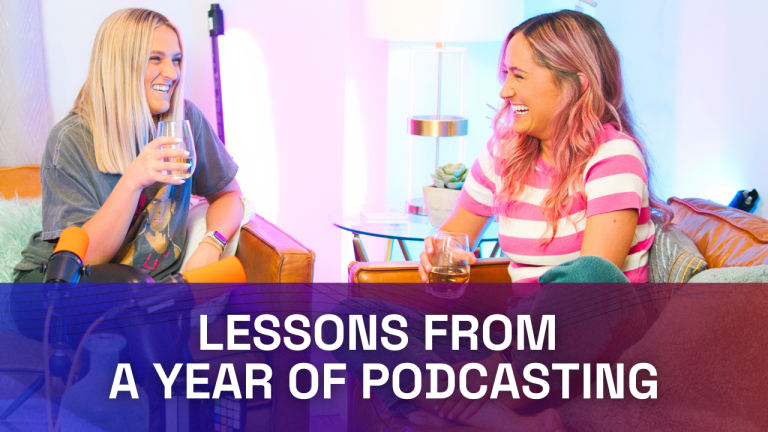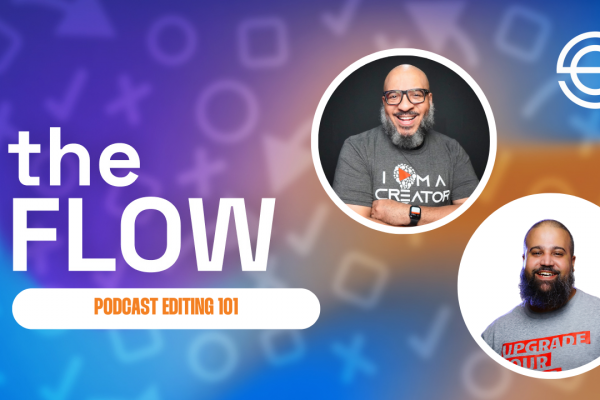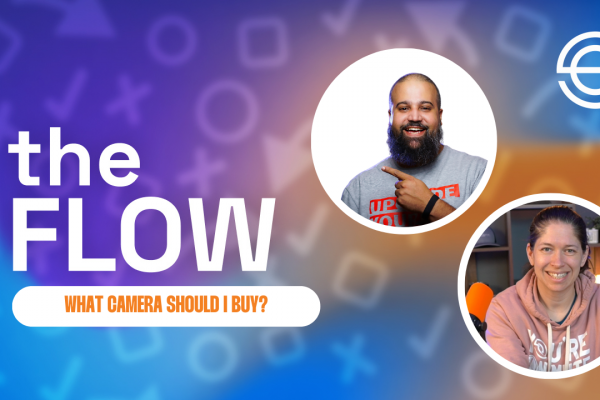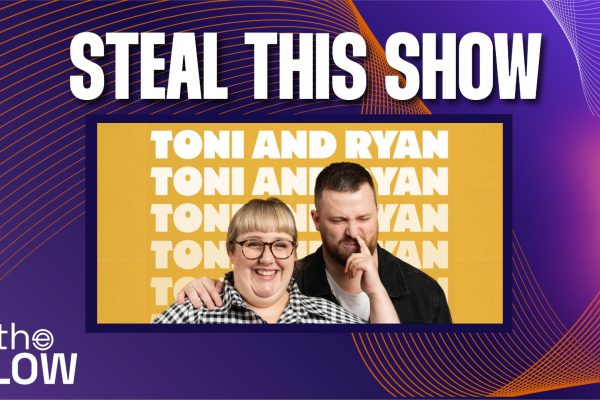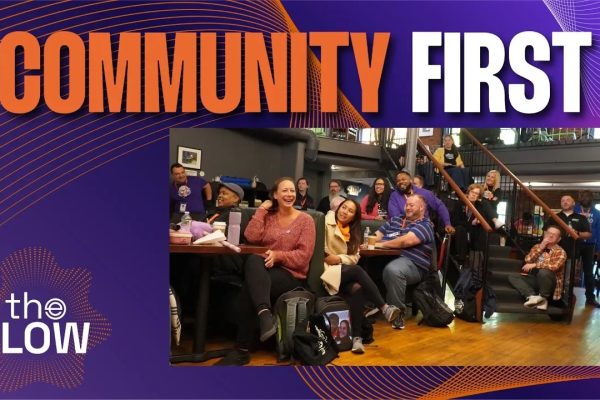We launched our video podcast, The Flow, in July 2022. The goal was simple: help everyone understand the how and why of video podcasting by being our own case study. We took our own advice and just started, learning as we go.
We chose a unique podcasting format compared to our counterparts. We record our podcast episodes live on YouTube in front of our “live studio audience” every Tuesday at 12pm Eastern. The following Tuesday, an edited version of that episode releases on YouTube and goes out to all of the major podcasting players like Apple Podcasts, Spotify, and Amazon Music.
Over the past year, we’ve learned a lot about podcasting. We’ve had the opportunity to attend some fantastic events like PodFest and Podcast Movement and we’ve interviewed some of the top names in the space.
Here are some of the things that we’ve learned from a year of video podcasting:
Simple Is Best
Since we create our video podcast with Ecamm, we could do a LOT including connecting multiple cameras, adding video clips, screen sharing, overlays, widgets, and more. But sometimes simple really is best.
For our show, we only have a couple of scenes, really simple graphics and lower thirds, and an outro that shows our viewers where to find the show and information about our sponsors. You can get as complicated as you want with your show, but remember that what matters most is the content and the value you’re providing to your audience. Don’t let flashy graphics and sound effects overpower the information you’re sharing.
We Love Our Live Studio Audience
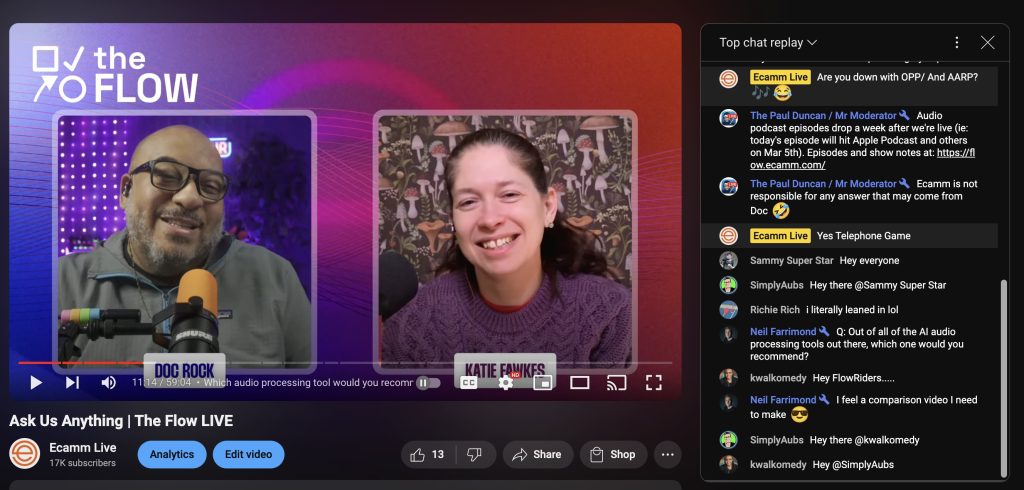
When we started The Flow video podcast, we chose to live stream our recording sessions to YouTube. We did this for a few reasons, namely:
- We use Ecamm already, so live streaming is easy.
- It gives our audience a behind-the-scenes on what the recording process is like.
- The schedule and live aspect keeps us accountable. If we don’t show up for our recording, people are sad.
- Because we’re streaming to YouTube, we get the opportunity for additional views, engagement, and impressions on our live videos.
The benefit that we didn’t really even think about was our live studio audience. We knew that we’d have live viewers for each episode’s recording, but we didn’t realize how helpful and impactful having this audience would be. Our live viewers not only provide great engagement on each video, which boosts our visibility on YouTube, but their feedback and questions often add value to our show and make it an overall better recording experience for us and for any guests we have on. They provide us with an energy that would wouldn’t get if we were simply recording.
A Remote Producer is Super Helpful
When we started The Flow podcast, we had a small team of incredible people helping us produce the show each week. Among them is our video editor and (now) producer, Luis Vega. In those early days, we would go live with Doc Rock producing the show and Katie joining via Ecamm’s Interview Mode. Both co-hosts were recording isolated video and audio locally so that Luis could edit everything into the final produced episode.
While this system was working fine enough, we made a decision a month or so into the show to have Luis also act as our remote producer. This accomplished the following:
- It allowed Doc and Katie to both call in as “guests” to the show.
- If anything happened with either Doc or Katie’s internet connection, the show would go on.
- Neither Doc or Katie would be distracted by producing the show (changing scenes, rolling video clips, bringing on comments and questions, etc).
- Once the live stream ends, Luis has all of the files all ready to go.
- Luis can quickly & easily pull up any websites, apps, graphics, etc that Doc and Katie mention, to give a visual to the conversation.
And the biggest benefit to having Luis as our remote producer is that we’re now able to call in 10-15 minutes early to do a tech check before every show. Luis can help us troubleshoot any issues so that we look and sound our best before the show starts.
Don’t Forget the Power of YouTube Podcasts
Since we’re video first at Ecamm, we’re also YouTube first for our podcast. We create our podcast specifically for YouTube and then use the edited file to share out to the podcast players.
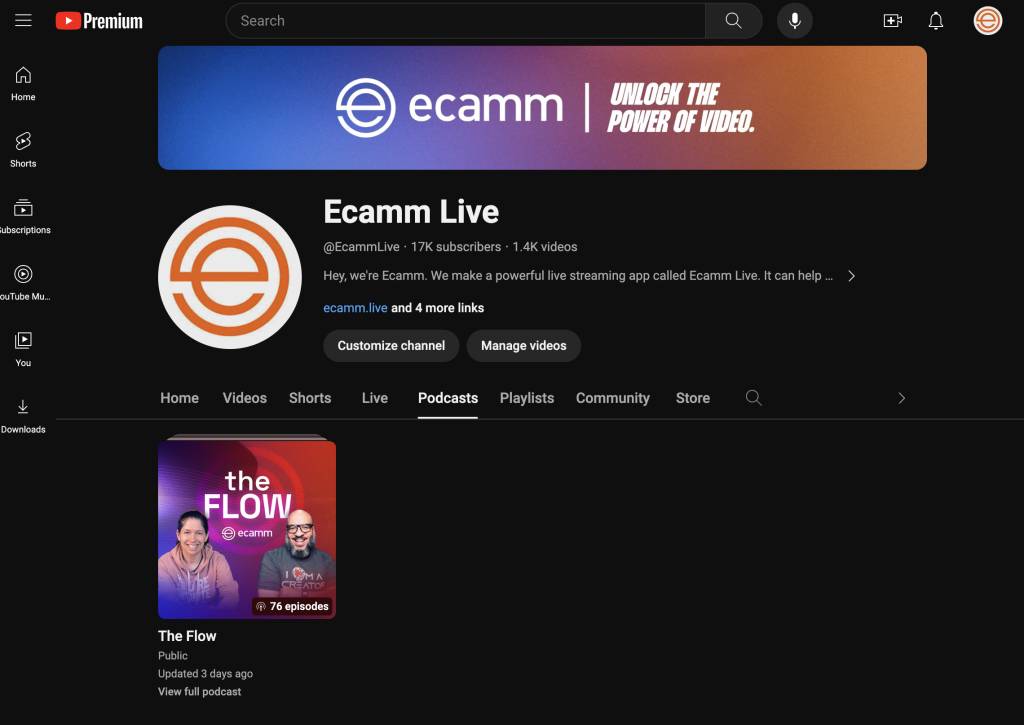
What’s important to remember is while YouTube is a big player in the podcasting space, it doesn’t play well with others. You can’t send your podcast from a podcast host like Captivate or Spotify through to YouTube. You have to upload to YouTube separately. This means you really need to be intentional about correctly setting up your YouTube Podcast playlist and remembering to upload each episode to it regularly.
Create Efficiencies by Leveraging AI
We’re all about creating efficiencies at The Flow, which is why we’re big fans of AI tools.
Whether it’s having ChatGPT help you with episode ideas, using Ecamm’s magic title generator when setting up a live stream, grabbing transcriptions, captions, and more, AI tools go a long way to save time and help you create better systems.
For our podcast, we edit our video and audio collaboratively in Scenery and then we run the file through Descript to grab the transcript and closed captions. If we plan on turning that episode into a workbook or blog post, we’ll also use CastMagic to help automate that process. Remember: AI is only as helpful as the system and automations you create.
Keep to a Set Schedule
If at all possible, set a schedule and stick to it. This seems simple enough, but is a really important step in building an audience. As a podcaster, you’re in full control of your schedule. You can release an episode every week, or bi-weekly, or monthly. You can setup your show with seasons or choose to power through week after week without a break. Your show can be an hour, thirty minutes, or even two minutes long.
The important part is making a schedule and keeping to it for at least a month or two to see how it goes. Making lots of changes is just going to cause confusion for your audience.
Just Start!
In the end, the most important thing that we learned is that you just need to start. Often we come up with excuses and distractions that keep us from accomplishing our goals. Remember that you can’t drive a parked car. You need to put it into drive first.
Make a plan, get started, and work on getting 1% better each and every episode you release. You’ve got this and we’re here to help. You can catch The Flow podcast every Tuesday at 12pm Eastern on YouTube or watch and listen wherever you get your podcasts.

